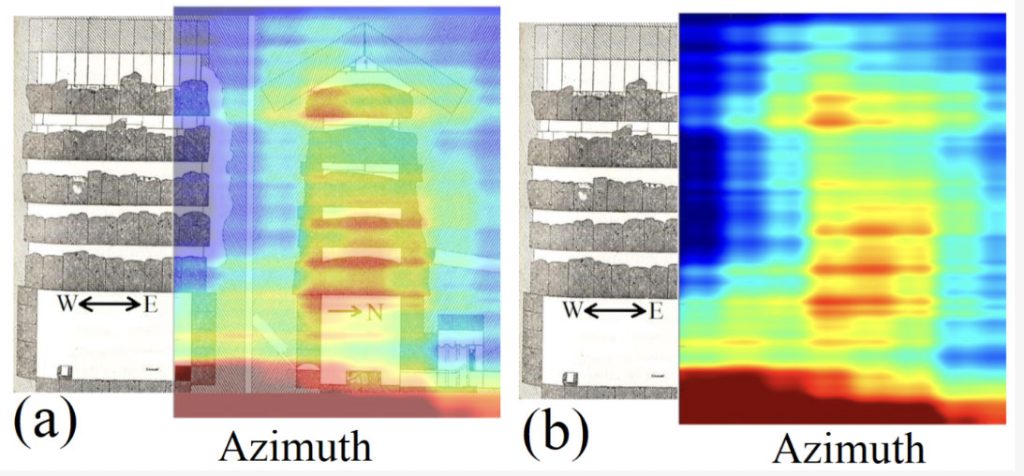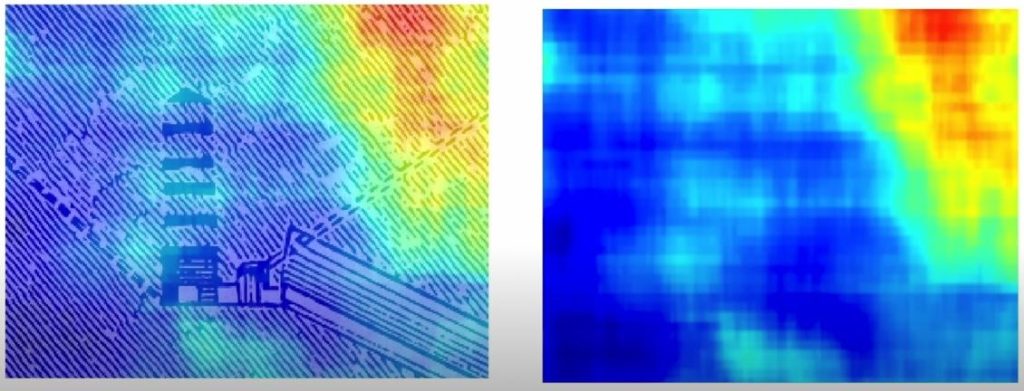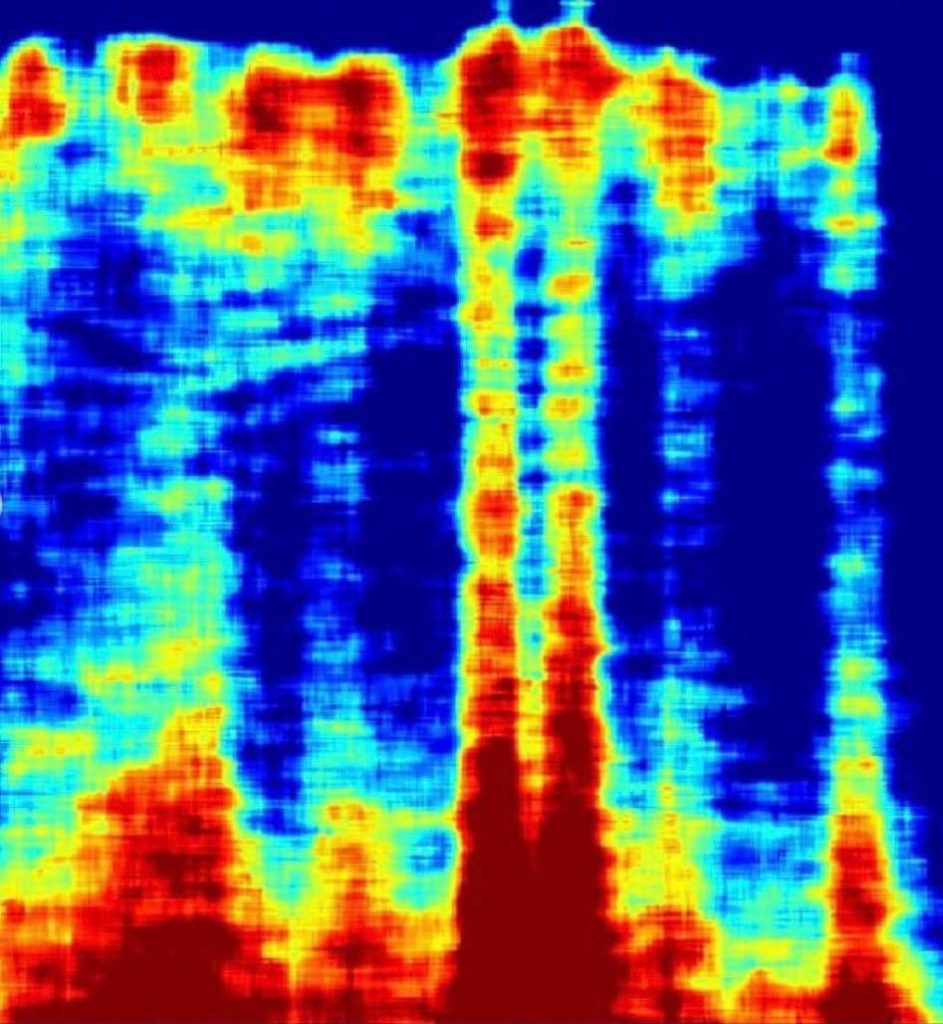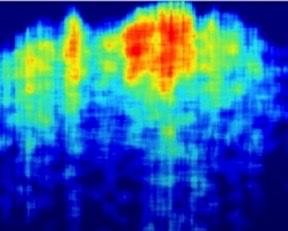Introduction
The Pyramids of Giza are an ancient testament to the ingenuity of the human race, and are among the most mysterious remnants of a forgotten past. Recently, a team of Italian researchers led by Dr. Filippo Biondi and Dr. Corrado Malanga proposed a bold hypothesis based on a novel remote sensing technique. By using Synthetic Aperture Radar (SAR) Doppler Tomography, the findings suggest a complex internal architecture beneath the Pyramid of Khafre that may indicate intelligent construction.1 Although the findings are preliminary, their results have ignited controversy due to the format of release and the implications of the bold claims.
This article is not intended as a counterattack on skeptics, nor to quell critiques. Rather, my goals are to separate legitimate criticisms from baseless opposition, to call upon scientists to critically engage with the methodology employed, and to promote the open-minded application of scientific principles, without allegiance to a particular institutional dogma, professional reputation, or historical norm. To do so, it is vital to analyze the legitimacy of several popular oppositional claims made about the discovery by exploring the methodology of Dr. Biondi and Dr. Malanga’s research and carefully unpacking remote sensing concepts in order to address specific misinformed narratives.
Key Words: SAR Doppler Tomography, Tomographic Imagery, Radar, Synthetic Aperture, Single Look Complex, Phase Information, Phase, Doppler Frequencies, Steering Matrix, Noise
In order to understand exactly why Biondi and Malanga’s findings are both significant and scientifically compelling, I’ll review the foundational concepts:
Synthetic Aperture Radar (SAR) Doppler Tomography is a technique that leverages satellite radar scans of the earth’s surface in conjunction with the known physics of vibrations to construct a 3D representation of the geological layout beneath the earth’s surface. This three-dimensional rendering is referred to as tomographic imagery.2 The technique relies on radar, which measures the time it takes for a microwave pulse to echo back, as well as the amplitude (strength) of that echo, which depends on the electrical properties and density of the reflected surface. Radar echoes from the surface aren’t just about amplitude but also about phase, which means how much the radar wave has shifted along its waveform cycle. Across the satellite’s trajectory, this phase changes depending on what surface the radar is hitting, known as phase evolution. These changes can suggest features at different depths, and can become more accurate when viewed from multiple angles. Synthetic Aperture refers to taking multiple radar measurements over a satellite’s trajectory in order to create a high-resolution dataset known as a Single Look Complex (SLC).2 An SLC is distinct from a standard image because it utilizes multiple high precision radar scans to ascertain phase information, which is the measurement of difference in micro-movements down to less than one millimeter.2 These micro-movements are caused primarily by seismic activity. To extract three-dimensional detail, the radar data is divided into narrower segments called sub-apertures. Each segment represents a slightly different angle of observation, made possible by the satellite’s motion. These angle shifts allow researchers to compare subtle phase differences and estimate depth beneath the surface.
In Biondi & Malanga’s 2022 study, the SAR doppler technique was applied to the Pyramid of Khnum Khufu, better known as the Great Pyramid of Giza.1 The team isolated sub-apertures of the SLC to enhance the spatial accuracy of the detectable micro-movements, like looking at one puzzle piece with a magnifying glass. By compiling a dataset of precise micro-movements over time and space, the team was able to analyze distortions in Doppler frequencies. The distortions are processed to create 3D reconstructions of subsurface features.
This same technique has been applied by Biondi’s team previously. In fact, an identical method was used to detect magma chambers and geological chasms beneath Mount Vesuvius in 2022.2, 3 The study was met with no pushback from the academic community. The stark contrast in reactions speaks for itself.
Using this method, Biondi and his team claim to have remotely sensed an anomaly beneath the Pyramid of Khafre, shown in Figure 1.4 Eight enormous pillars, each extending approximately 648 meters beneath the surface of the Giza Plateau, have become controversial symbols, threatening to upend all that we know to be true of ancient civilizations.
At this moment, it is vital to note that the entirety of methodology employed in the Khafre Research project has not yet been disclosed in a peer-reviewed technical paper, nor do the previous studies conducted by the team adequately convey the actual implementation of the reviewed methodology.
For example, the tomographic reconstructions appear to be based on depth-dependent phase evolutions, suggesting that a mathematical model to determine the spatial path of the radar transmission, or a steering matrix was constructed. The authors neglected to include how such a matrix may have been constructed and used to discern results, nor do they clarify the parameters used in the depth reconstruction process. Among the much-needed information absent from the Khafre Research Project, the extent to which artificial intelligence was used in processing data to generate 3D reconstructions, as well as in analyzing patterns, is still unknown. Details as to how the team determined whether the voids were natural or of artificial construction are still unknown.
In lieu of a peer-reviewed technical paper, the research team opted to disclose findings in a press release, connecting the findings to ancient myths and texts such as the Hall of Amenti described in the Emerald Tablets, as well as the “14 residences” detailed in the Book of the Dead.5 The format of this release, while potentially aiming to amplify the reach of the findings, was unscholarly and ultimately diminished the scientific reputation of the Khafre Research Project team. The team’s self-association with mythical and unfounded claims via the press release served to invite backlash from the academic community, rather than dissuade it.
The press release announcing the Khafre Research Project’s initial findings was covered by several news outlets, but one of the most widely circulated interpretations came from “The Reese Report” article and video coverage.6 The author, Greg Reese, specializes in creating artistically stylized summaries of popular emergent scientific stories. The cinematic editing style and speculative nature of the content blurs the boundary between scientific journalism and entertainment.
While not associated with the research team, “The Reese Report” dramatized the implications of press release with animations and unscientific associations to legends and myths, gaining millions of views and becoming, for many, the primary source of information about the discovery. As a result, skeptical rhetoric surrounding the findings has been disproportionately shaped by the dramatic synopsis, rather than by a technical paper or statements made by the researchers themselves.
Although the research team should have focused their energy on a more collegiate information release and more carefully curated their media coverage, and despite lingering methodological gaps, it is my concern that the mainstream rhetoric is proactively suppressing the findings before the publishing of the technical paper.
Using what information we have available of the Khafre Research Project findings detailed in the press release, in combination with Biondi & Malanga’s previous remote sensing techniques used on the Pyramid of Khnum Khufu, we can begin to dismantle popular oppositional claims in an effort to separate baseless dismissal from legitimate critiques of Biondi & Malanga’s results.
We begin with Zahi Hawass, a prominent Egyptologist with a reputation for carefully curating the flow of information and ease of investigation on the narrative of ancient Egypt. Hawass has outright dismissed Biondi and Malanga’s findings, calling them “completely wrong” and “baseless”,7 despite his complete lack of experience in the field of remote sensing. He offers us our first, and most popular oppositional claim, which is that radar does not penetrate deeply into stone, and therefore the SAR-Doppler Tomography technique must be a baseless method of gathering internal and subterranean information. He is correct to state that radar does not penetrate deeply into stone, but is incorrect in assuming that Biondi’s study relies on penetration to ascertain results. Perhaps he should review the literature before offering his “matter-of-factly” sentiments, as there is sufficient proof of the technique working quite well. For example, Figure 2, derived from Biondi’s study of the Khnum Khufu Pyramid, clearly displays the remotely sensed tomography overlaid with known internal structures.1

(Figure 2) Tomography overlaid with known internal chambers 1 (CCBY4.0)
In fact, Hawass’s history of gatekeeping the mainstream narrative is quite well documented. He has banned archaeologist Joann Fletcher from working in Egypt after she revealed findings without his approval.8 He has rejected alternative perspectives, such as Afrocentrism in Egyptian history, without offering a scientifically grounded reason.9 His legacy as the foremost Egyptologist has enabled him to sell books and Egyptology courses. With the evidence at hand, it may be reasonable to infer that his dismissal of SAR Doppler Tomography feels less like scientifically grounded skepticism, and more like an attempt to preserve a legacy, fearing that new findings may destroy his increasingly questionable credibility.
Michael Shermer, the founding publisher of Skeptic magazine, makes an addition to the misinformed rhetoric surrounding the discovery, tweeting “What am I missing?” alongside Figure 3, another cherry-picked visual that many skeptics cling to.10 The day following Shermer’s post, journalist Armando Mei, working with the Khafre Research Project, would deliver Figure 1 to his instagram audience, alongside promising that the technical paper is in the works, and will be available in the coming months.4
(Figure 3, left) Tomography image referenced by Shermer & other critics 5
(Figure 1, right) Latest tomography of substructures, available as of March 22 4
Shermer may have missed or ignored Figure 1, which is now the foundational imagery upon which the substructure hypothesis should be formed until the official paper is released. Although Figure 1 can’t confirm claims of a substructure without documented methodology, it is arguably a more compelling image, inviting a viewer to open-mindedly examine the controversial claims, and certainly meriting a deeper investigation.
Theoretical physicist and YouTube content creator Sabine Hossenfelder created a video critiquing the Giza findings to an audience of nearly 1.5 million viewers.11 Although her expertise in quantum gravity is impressive, it does not apply to the field of remote sensing. Hossenfelder refutes the interpretation of Figure 3 as spiral substructures, again without crucially acknowledging that it is Figure 1 that creates a much more compelling basis of the hypothesis.
She argues that Biondi “cherry-picks” his results, and cites Figure 4 as an example of Biondi’s methodology failing to adequately sense known internal structures.1

(Figure 4) Biondi & Malanga’s images criticized by Hossenfelder; Tomographic results overlaid with known internal chambers 1 (CCBY4.0)
However, if Biondi were to cherry pick results, why would he include them in his own study? Discrepancies in Figure 4 could be attributed to noise, which is a common image processing error. Even more likely is that the image indicates the presence of multiple different substrates within the pyramid.
Popular YouTuber and archaeological content creator Milo Rossi, known as Miniminuteman, delivers what may at first appear as a balanced take on the discovery to an audience of 2.3 million people.12 It is worthwhile to mention that Rossi holds a bachelors in Environmental Science, presumably with a focus on anthropological and archaeological coursework.13 Again, these fields are distinct from the fields of remote sensing, subsurface geology, and physics. Although the video aims for academic integrity, Rossi falls just short of rigorous engagement with science by relying on the very same image as Shermer and Hossenfelder, Figure 3, thus recycling the same misleading narrative as the other skeptics. Throughout the entire 44 minute video, Figure 1 is not analyzed, nor its existence acknowledged, once again ignoring the most compelling piece of evidence, and once again dismissing a technique before the research team has a chance to publish their methodology. By repeating the dominant narrative instead of critically engaging with the methodology, Rossi perpetuates a dismissive attitude toward what could easily be the most important discovery of the century.
What’s most frustrating about these critiques is the lack of engagement with the actual science. No Egyptologist, debunker, nor skeptic has directly challenged the documented methodology of SAR Doppler Tomography. Yet, we see the discovery’s media attention polluted with buzzwords like “Atlantis” or “Loch Ness Monster” to dismiss it as fringe.14 When legitimate science can be so quickly dismissed as pseudoscience by a single authority, we entrust the narrative, not only of Egypt, but of the human race unto a select few unelected and self-serving people. This is not skepticism, it is gatekeeping, and it is intellectual cowardice. The academics seem more concerned with protecting an established narrative rather than fostering open inquiry.
It is my opinion that any geometrical organization detected beneath the Pyramid of Khafre may well suggest intelligent construction, be it a simple foundation or spiraling pillar substructures. Why would this be considered speculative? After all, above these substructures sits the most remarkable example of human ingenuity, thousands of years before our retelling of history claims it should have been possible.
The pattern of perpetuated suppression raises a critical question: at what level of organization does control of information in Egyptology occur? Is it merely individual high ranking academic gatekeepers like Hawass, or does it extend to institutional structures? In the age of information, separating conspiracy from truth is an enormous task, but I contend that the reflexive dismissal of Biondi and Malanga’s work indicates not only a lack of academic integrity, but an intentional resistance to potentially paradigm-shifting discoveries. Blatantly, critics like Shermer and Hawass profit from weaving threads of doubt into alternative theories, capitalizing on controversy for clicks.
The SAR Doppler findings beneath the Pyramid of Khafre are not proof of lost civilizations, nor ancient knowledge of intricate and massive construction. But they are intriguing. Academia must embrace a new approach, rooted in rigorous scientific debate. It must welcome interdisciplinary innovations instead of shunning them, in order to rebuild the fundamental principles of the academic institution, such as integrity, honesty, and critical engagement. It must dare to ask, and seek to answer our species’ most important questions. Dismissing the findings outright is antithetical to the spirit of science.
We must demand more from Biondi’s team in terms of methodological clarity, specifically in the promised peer-reviewed paper. But we must also demand more from the academic gatekeepers, who too often conflate skepticism with suppression of information and of investigation. Science thrives when data is met with critical, open-minded inquiry. Only by engaging with one another may we deepen our understanding of this ancient enigma.
References:
-
1. Biondi, F., & Malanga, C. (2022). Synthetic Aperture Radar Doppler Tomography Reveals Details of Undiscovered High-Resolution Internal Structure of the Great Pyramid of Giza. Remote Sens. 2022, 14, 5231. [https://doi.org/10.3390/rs14205231]
-
2. Biondi, F. Scanning Inside Volcanoes with Synthetic Aperture Radar Echography Tomographic Doppler Imaging. Remote Sens. 2022, 14(15), 3828. [https://doi.org/10.3390/rs14153828]
-
3. HarmonicSAR. “Natural Environments Monitoring.” HarmonicSAR, [https://www.harmonicsar.com/Natural_Environment.html]
-
4. Mei, Armando. (2025). Instagram post regarding Pyramid of Khafre findings [https://www.instagram.com/p/DHgU03wInAW/?utm_source=ig_web_copy_link&igsh=dTBuNTZxNjUwNDRi]
-
5. EXPEDITION -Nicole Ciccolo-. (2024). Press conference #Giza. Armando Mei, Filippo Biondi, Corrado Malanga. #expedition_nicoleciccolo [YouTube video]. https://www.youtube.com/watch?v=xDpdJFlLpRE
-
6. Reese, G. “SAR Scan of Khafre Pyramid Shows Massive Substructure.” Substack, 4 June 2024. [https://gregreese.substack.com/p/sar-scan-of-khafre-pyramid-shows]
-
7. Skeptic.com. (2023). Article on Pyramid of Khafre findings. [https://www.skeptic.com/article/underground-structures-in-giza/]
-
8. Hammer, J. (2012). The Rise and Fall and Rise of Zahi Hawass. Smithsonian Magazine. [https://www.smithsonianmag.com/history/the-rise-and-fall-and-rise-of-zahi-hawass-72874123/]
-
9. Ahram Online. “Afrocentrist claims on ‘Black origins’ of ancient Egyptian civilization ‘have no basis in truths’: Hawass.” Ahram Online, 20 June 2024. [https://english.ahram.org.eg/News/525758.aspx]
-
10. Shermer, M. (2023). Tweet regarding Pyramid of Khafre findings. [https://x.com/michaelshermer/status/1903123376950087989]
-
11. Hossenfelder, S. (2023). “Huge Structures Discovered Under Pyramids?” YouTube video, [https://youtu.be/cqCudopAz64?si=sodyOTM-3s6Taedl]
-
12. Rossi, M. (Miniminuteman). (2023). “The New Giza Pyramid Conspiracy Is A Disaster.” YouTube video, [https://youtu.be/oYmREV6m-Fg?si=wBxWiX5eDKmlkx1P]
-
13. Rossi, M. Milo Rossi (Miniminuteman) LinkedIn profile, 2025.[https://www.linkedin.com/in/milo-rossi-302401205/]
-
14. Yahoo News. “Scientist crushes claims of secret Egyptian pyramid underground city.” Yahoo News UK, [https://uk.news.yahoo.com/scientist-crushes-claims-secret-egyptian-175606161.html]









Thank you for this thoughtful analysis of the findings and the reactions to them. Hopefully a solid peer review will demonstrate what the facts really are. Thank you for all your compelling work, Mr. Hancock!
Dakota when I was a kid in the sixties and seventies I was astonished to learn if buildings are to stand for any length of time they need foundations as deep as they are high e.g. an Empire State Building above ground needs an ‘Empire State Building’ below ground. At the time this immediately set my juvenile imagination wondering if the Great Pyramid has been able to continue standing for 7,000 years surely this means it’s built on a ‘Great Pyramid’ under the ground? Yet to this day all I’ve ever been able to find in gatekept archaeology concerning any foundations are references to various shafts and the subterranean chamber they descend to.
It would make more sense that these findings are foundations and that the builders of these structures knew that not including them into the building process may have consequences in the building collapse in future years.
If so they were very smart people to have thought about foundations thousands of years ago,exploring these buildings more closely will only improve our knowledge on how and why they were actually built and their true purpose being there, if they are anything more than foundations it could and would be a bonus to our knowledge these great buildings.